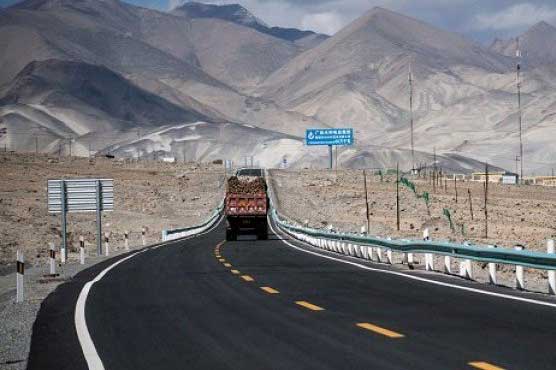CPEC offers enormous potential to boost Pakistan economy: report

The Asian Development Bank published "The Web of Transport Corridors in South Asia" report.
ISLAMABAD (Dunya News) - With investments in roads, railways and ports, the $60 billion China Pakistan Economic Corridor (CPEC) offers enormous potential for Pakistan to boost its economy, reduce poverty, spread benefits widely and help those likely to be affected by the new trade route, a new report says.
The report, entitled “The Web of Transport Corridors in South Asia”, published by the Asian Development Bank, the United Kingdom’s Department for International Development, the Japan International Cooperation Agency, and the World Bank, discusses several economic corridors including CPEC.
“The largest economic gains from investing in transport corridors may arise from urbanization and job creation around this new infrastructure, rather than from many more vehicles using it”, said one of the report’s authors, World Bank economist Martin Melecky, who added: “not all corridor investments are equally successful in creating large economic surpluses that spread fairly throughout society.”
The report notes that the many transport corridors proposed across Asia would cost trillions of dollars to implement, far exceeding the financing resources available. Hence, countries need to prioritize the most promising corridors that will deliver the expected transformative impacts for their economies and people. Engineering designs and geopolitical considerations could be important, but sound economic analysis is the key to designing truly successful corridors, the report argues.
The ability of large-scale transport investments to generate wider economic benefits depends on the population density in the areas they cross. Their capacity to spur structural transformation along the way depends on complementary factors around the transport corridors, such as the skills of the local population or restrictions on local land use. The new transport infrastructure must come with the means for people to take advantage of the improved connectivity right from the start.
“The upcoming Khyber Pass Economic Corridor project is a positive example, where trade facilitation and the development of local economic activities are explicitly integrated in the design of the project”, said Illango Patchamuthu, World Bank Country Director for Pakistan.
The report reviews the international experience with economic corridors, from the Pacific Ocean Belt in Japan in the 1960s to high-speed train networks in Europe more recently. It also analyzes the impacts of the Golden Quadrilateral highway system in India and finds positive effects, including higher economic activity and better (non-farm) jobs for women. However, air pollution rose in parallel and gains in household consumption were not equally shared across connected districts. Appraisal simulations for CPEC and the Kolkata-Dhaka corridor suggest that complementary measures are needed to improve local conditions that in turn will create formal jobs and generate tax revenues that could pay for corridor investments.
In light of the international evidence and specific analyses for South Asia, the report advocates for a more comprehensive design of corridor programs that actively manages tradeoffs and closes potential financing gaps in a sustainable manner.


